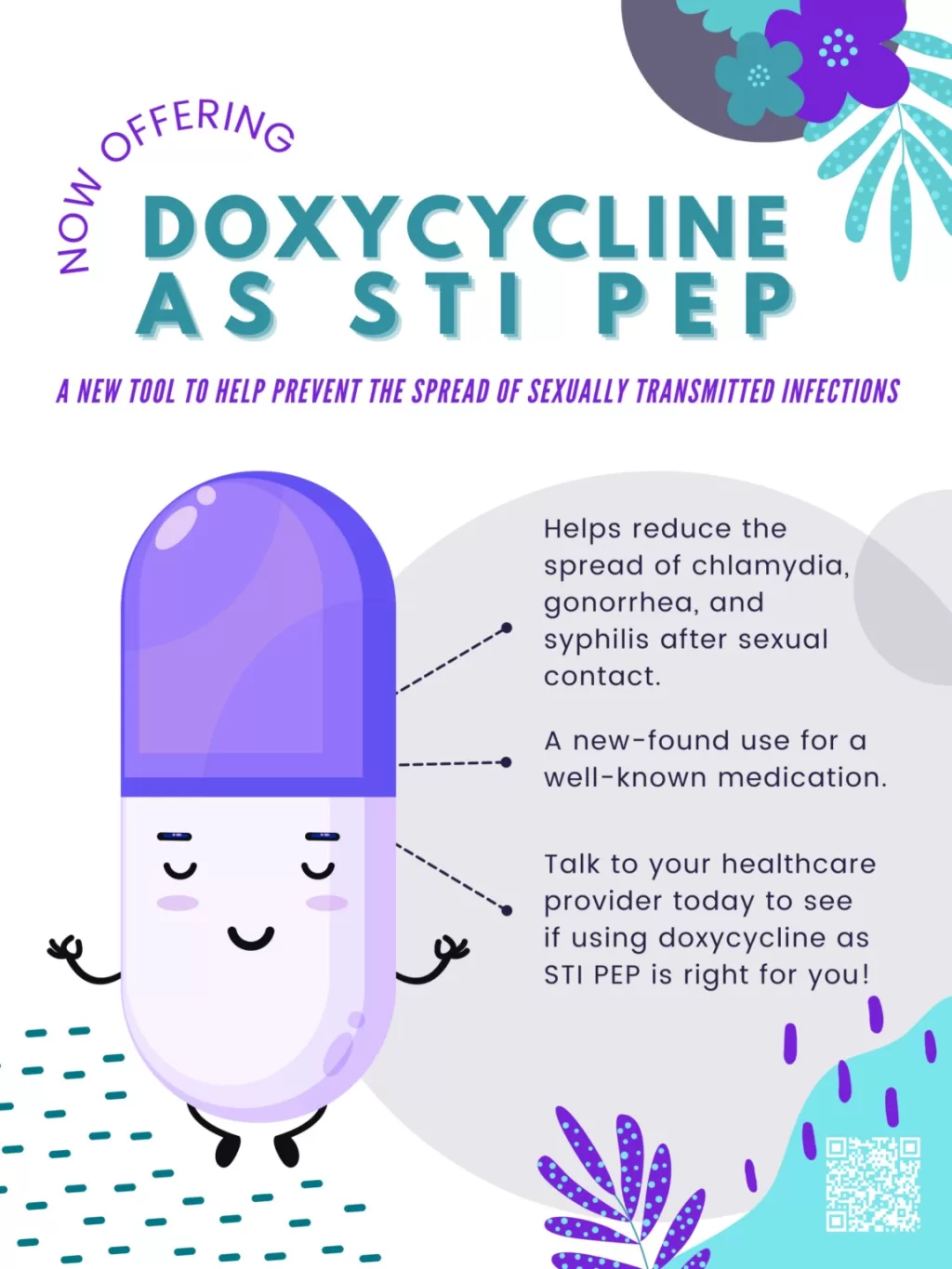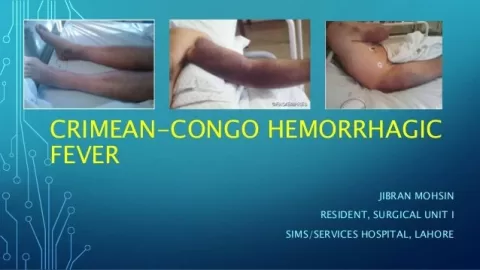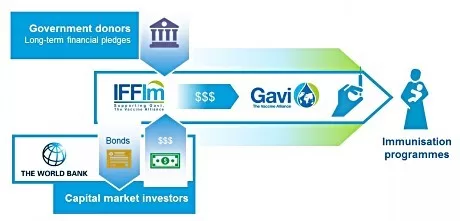Doxy-PEP, or doxycycline post-exposure prophylaxis, is emerging as a groundbreaking intervention in the fight against sexually transmitted infections (STIs). Recent studies illuminate its substantial role in reducing the rates of chlamydia and syphilis among its users, showcasing an impressive 83% decrease in these infections. With the threat of STI rates remaining a persistent public health concern, doxy-PEP provides a promising avenue for syphilis prevention and chlamydia reduction, especially in high-risk populations. The findings also indicate a rising need to monitor gonorrhea resistance, as initial declines have begun to plateau. As doxy-PEP continues to gain traction in clinical settings, understanding its long-term effectiveness holds vital importance for STI management.
Doxy-PEP represents a proactive strategy in managing post-exposure risks for STIs. This approach, using doxycycline shortly after potential exposure, has shown remarkable success in controlling infections like chlamydia and syphilis, ensuring a healthier future for sexually active individuals. The ongoing discussions around resistance patterns, particularly concerning gonorrhea, highlight the importance of vigilance in treatment protocols. Exploring alternative approaches within the realm of STI prevention, such as comprehensive education and partnership-based preventive methods, can fortify efforts alongside doxy-PEP. As public health initiatives evolve, understanding the implications of these treatments will be essential in curbing the spread of STIs in communities.
Understanding Doxy-PEP: The Future of STI Prevention
Doxycycline post-exposure prophylaxis, commonly known as doxy-PEP, represents a groundbreaking approach in preventing sexually transmitted infections (STIs), especially chlamydia and syphilis. Introduced as a preventive measure for individuals who engage in condomless sex, doxy-PEP entails a single dose of doxycycline taken within 72 hours after exposure. The latest research indicates that this intervention has played a critical role in achieving an 83% reduction in chlamydia and syphilis rates among its users, showcasing its effectiveness in STI prevention strategies. By fundamentally altering the traditional responses to STIs, doxy-PEP is positioning itself as a vital asset in public health efforts aimed at reducing STI prevalence and management costs in sexually active populations.
As we delve deeper into the implications of doxy-PEP, it is important to examine its broader impact on sexual health practices. The positive results in chlamydia reduction and syphilis prevention are significant, especially in urban areas where these infections are more prevalent. Furthermore, the accessibility of doxy-PEP in sexual health clinics can facilitate timely intervention, promoting better health outcomes for high-risk populations. The ongoing research into doxy-PEP adherence and its effectiveness also raises critical questions about how similar interventions can be implemented globally, highlighting the necessity for continued innovation in STI prevention strategies.
Impact of Doxy-PEP on STI Rates: Evidence from San Francisco
Recent data from a study involving over 4,500 participants in San Francisco demonstrates the dramatic impact of doxy-PEP on STI rates, particularly regarding chlamydia and syphilis. Researchers found that users of doxy-PEP not only experienced significant reductions in these infections but also had comparable STI rates to non-users, despite reporting higher numbers of sexual partners without condoms. This remarkable finding suggests that doxy-PEP is not merely an adjunct to safer sex practices but a standalone method that can effectively reduce the incidence of these STIs in populations with high-risk behaviors.
However, the results also highlight a concerning trend regarding gonorrhea resistance. While initial evidence indicated a decrease in gonorrhea rates among doxy-PEP users, subsequent data points toward a resurgence, implying potential resistance development. This underscores the importance of ongoing surveillance and research to monitor the efficacy of doxycycline as a prophylactic treatment. As the use of doxy-PEP expands, public health initiatives must also address the challenges posed by antimicrobial resistance, ensuring that doxy-PEP remains a reliable option in combating STIs.
The Role of Doxy-PEP in Antimicrobial Stewardship
In the context of antimicrobial stewardship, the introduction of doxy-PEP signifies a proactive approach to managing sexually transmitted infections while mitigating the risk of antimicrobial resistance. Antimicrobial stewardship involves implementing strategies that promote the responsible use of antibiotics, and doxy-PEP aligns with these principles by offering an evidence-based option to reduce chlamydia and syphilis rates without unnecessary overutilization of antibiotics. This innovative strategy seeks to balance effective infection prevention with the need to preserve the efficacy of existing antimicrobials.
The broader implications of doxy-PEP within the framework of antimicrobial stewardship extend beyond individual health outcomes to encompass community health dynamics. As more individuals utilize doxy-PEP, a decrease in STI rates can contribute to lower transmission rates within the community. This collective benefit can foster a healthier environment, reducing the burden on healthcare systems and supporting public health initiatives aimed at controlling STIs. However, continued education on the judicious use of doxy-PEP is vital to ensure its long-term success as part of an integrated strategy for STI prevention.
Chlamydia Reduction: Evaluating the Evidence
The compelling evidence of chlamydia reduction following the implementation of doxy-PEP is backed by rigorous studies examining the outcomes of high-risk populations. By analyzing STI rates before and after the introduction of doxy-PEP, researchers have demonstrated a striking 83% reduction in cases, establishing a clear link between doxy-PEP usage and improved sexual health outcomes. Such significant declines underscore the potential of doxy-PEP to serve as an effective intervention against chlamydia, resonating with ongoing public health efforts to combat the epidemic levels of this STI.
Moreover, the decline in chlamydia rates post-doxy-PEP adoption prompts further inquiry into the long-term sustainability of this intervention. As the data continues to evolve, it is crucial for health authorities to monitor the effectiveness of doxy-PEP in various demographics while assessing its role in comprehensive sexual health strategies. Furthermore, engaging with patients to promote awareness about the benefits of doxy-PEP can enhance its uptake and efficacy in chlamydia reduction.
Syphilis Prevention: The Promise of Doxy-PEP
The resurgence of syphilis in many urban centers has become a pressing public health concern, emphasizing the urgent need for effective preventive strategies. Doxy-PEP has emerged as a promising tool in the fight against syphilis, as evidenced by substantial reductions reported in clinical studies. By enabling individuals to manage their risk after potential exposure to syphilis, doxy-PEP empowers patients to take proactive steps towards maintaining their sexual health and preventing further transmission, especially among high-risk groups.
Addressing syphilis prevention through doxy-PEP also necessitates an exploration of social determinants impacting STI rates. The intersection of community education, healthcare access, and individual responsibility plays a critical role in the success of doxy-PEP initiatives. Public health campaigns promoting awareness around syphilis and the use of doxy-PEP can help reduce the stigma associated with seeking STI prevention, encouraging more individuals to utilize these effective tools in safeguarding their health and that of their partners.
Navigating Gonorrhea Resistance: Challenges of Doxy-PEP
While doxy-PEP has shown remarkable efficacy in reducing chlamydia and syphilis rates, the emerging challenge of gonorrhea resistance poses significant hurdles for public health. As the study indicated, the initial decline in gonorrhea cases within the doxy-PEP cohort has shifted towards an upward trend, suggesting potential resistance development to doxycycline. This phenomenon highlights the necessity of continuous research and monitoring to understand the implications of doxy-PEP on gonorrhea treatment outcomes and the potential need for alternative therapeutic options.
The risks associated with gonorrhea resistance necessitate an adaptive approach to antibiotic use within public health strategies. Stakeholders must remain vigilant in tracking resistance patterns and educating clinicians and patients alike on the importance of responsible antimicrobial use. Implementing regular assessments and updates based on emerging data will be crucial in ensuring that doxy-PEP remains an impactful component of STI prevention while safeguarding against the rising threat of resistance.
Global Implications of Doxy-PEP in STI Management
The global implications of doxy-PEP in the management of sexually transmitted infections signal a potential shift in public health strategies worldwide. With successful outcomes observed in high-prevalence regions, the adoption of doxy-PEP can lead to a standardized approach toward STI prevention on a global scale. Countries grappling with escalating STI rates may benefit from incorporating doxy-PEP into their national healthcare policies, ensuring that access to prophylactic treatment becomes a fundamental component of sexual health initiatives.
However, implementing doxy-PEP globally requires careful consideration of diverse healthcare environments and the resources available. Tailoring educational campaigns to address cultural perceptions of STIs and prevention methods will be pivotal in ensuring high acceptance and effectiveness rates. Furthermore, collaboration across borders to share research findings and best practices can enhance the overall success of doxy-PEP initiatives, paving the way for a more comprehensive and effective response to the global STI epidemic.
Doxy-PEP and Patient Education: Key to Success
Patient education is paramount in maximizing the success of doxy-PEP as a preventative intervention against STIs. Educating patients on the appropriate use of doxy-PEP and the importance of timely administration post-exposure can enhance adherence and promote greater effectiveness. Providing information about the continued need for safe sex practices, including condom usage, alongside doxy-PEP is essential to mitigate potential risks associated with STI transmission.
Additionally, healthcare providers must engage in open dialogues with patients to address concerns and misconceptions surrounding doxy-PEP. By fostering a supportive environment where patients feel comfortable discussing their sexual health, providers can enhance the overall effectiveness of doxy-PEP initiatives. In doing so, we can create pathways for sustained reductions in STI rates and ensure that patients understand the ongoing importance of both preventative measures and regular STI screenings.
The Future of Doxy-PEP: Ongoing Research and Innovation
As doxy-PEP continues to gain traction, ongoing research and innovation will be fundamental to optimize its use and effectiveness. Future studies must focus on understanding adherence patterns among varied demographics, evaluating long-term outcomes, and exploring the potential development of resistance. This knowledge will help public health officials make informed decisions regarding guidelines and recommendations for doxy-PEP implementation.
In addition to clinical research, there is a critical need for advocacy and funding to support doxy-PEP programs, particularly in underserved communities. By investing in research that explores innovative approaches to address barriers to access and education, we can ensure that doxy-PEP reaches those who stand to benefit the most. The future of STI prevention relies not only on effective tools like doxy-PEP but also on our collective commitment to advancing sexual health knowledge and care.
Frequently Asked Questions
What is doxy-PEP and how does it help in chlamydia reduction?
Doxy-PEP, or doxycycline post-exposure prophylaxis, is a preventive treatment involving the administration of doxycycline within 72 hours after potential exposure to sexually transmitted infections (STIs), particularly chlamydia and syphilis. Recent studies indicate that doxy-PEP significantly reduces the incidence of chlamydia by up to 83% among users compared to those who do not take the medication.
How effective is doxy-PEP in preventing syphilis?
Doxy-PEP has been shown to effectively lower syphilis rates among users, with studies reporting an 83% reduction in the rates of both chlamydia and syphilis combined. This significant decline highlights the potential of doxy-PEP as a key intervention in syphilis prevention strategies.
Are there any concerns about antibiotic resistance with doxy-PEP use?
Yes, while doxy-PEP has demonstrated efficacy in reducing STI rates, there are concerns regarding potential gonorrhea resistance to doxycycline. Although initial reductions were observed in gonorrhea rates among users, a recent study noted a rise in gonorrhea towards the end of the analysis, suggesting a need for ongoing monitoring of antimicrobial resistance.
How has doxy-PEP changed the STI rates in sexual health clinics?
The introduction of doxy-PEP has resulted in notable declines in STI rates, particularly chlamydia and syphilis, at sexual health clinics. An analysis showed that STI rates among doxy-PEP users were comparable to those of patients who never received doxy-PEP, despite a higher number of condomless sexual partners, indicating its effectiveness in curbing infection transmission.
What are the implications of doxy-PEP for managing gonorrhea and its resistance?
Doxy-PEP has significant implications for managing gonorrhea and its resistance, as initial success in reducing gonorrhea rates has been followed by a potential increase in resistance. This underscores the importance of further research on the adherence to doxy-PEP and its long-term effectiveness in preventing STIs, including ongoing challenges with antibiotic resistance.
Who should consider using doxy-PEP for STI prevention?
Individuals at high risk for STIs, particularly those engaging in condomless sexual encounters, should consider doxy-PEP as a preventive measure post-exposure. Consultation with a healthcare provider can help assess individual risk factors and the appropriateness of doxy-PEP as a prophylactic option for reducing rates of chlamydia, syphilis, and potentially gonorrhea.
| Key Point | Details |
|---|---|
| Study Overview | Analysis of 2,524 doxy-PEP users vs. 2,068 non-users over 96 weeks to assess STI rates. |
| Intervention Method | Doxycycline taken within 72 hours after unprotected sex. |
| Significant Findings | 83% reduction in chlamydia and syphilis cases in doxy-PEP users. |
| Impact on Gonorrhea | A smaller reduction was observed for gonorrhea, with a noted rise in rates towards the end of the analysis. |
| Conclusion Recommendations | Future studies should assess doxy-PEP adherence and its impact on antimicrobial resistance. |
Summary
Doxy-PEP has proven to be an effective intervention in reducing chlamydia and syphilis rates significantly. The findings from the San Francisco study emphasize its potential role in controlling STIs, while also pointing to concerns about rising gonorrhea resistance. Continued research on doxy-PEP adherence and resistance is crucial as its global usage increases.
The content provided on this blog (e.g., symptom descriptions, health tips, or general advice) is for informational purposes only and is not a substitute for professional medical advice, diagnosis, or treatment. Always seek the guidance of your physician or other qualified healthcare provider with any questions you may have regarding a medical condition. Never disregard professional medical advice or delay seeking it because of something you have read on this website. If you believe you may have a medical emergency, call your doctor or emergency services immediately. Reliance on any information provided by this blog is solely at your own risk.








